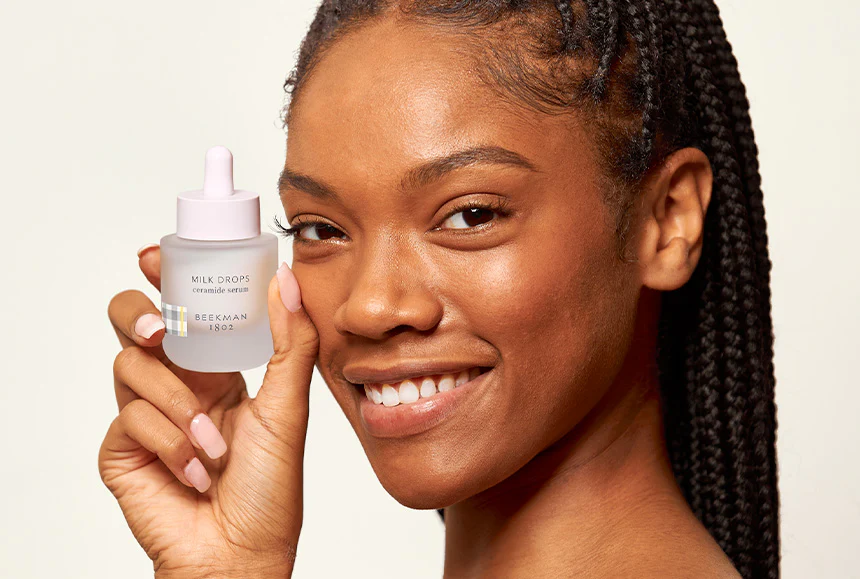In skincare, what you use is important—but how you use it can make all the difference. Even the best products can lose effectiveness if applied in the wrong order. Understanding how to layer skincare products correctly ensures that each formula penetrates your skin properly and delivers maximum results.
Whether you’re a skincare beginner or someone looking to refine your routine, this guide will walk you through the ideal sequence, why it matters, and how to adjust based on your skin type and product texture.
Why Proper Skincare Layering Matters
Each skincare product is designed with a specific purpose and consistency. When applied in the wrong order, they can block absorption, cancel each other out, or even cause irritation. Correct layering helps to:
- Maximize absorption of active ingredients
- Prevent product pilling or buildup
- Target multiple skin concerns effectively
- Lock in hydration and boost skin barrier health
Think of your routine as building blocks: thinnest to thickest, lightest to richest.
The Golden Rule: Thinnest to Thickest Texture
The general rule when layering skincare is to go from the thinnest, water-based products to the thickest, oil-based or cream formulas. This ensures your skin gets the most benefit from each layer without interference.
Step-by-Step Guide to Layering Skincare Products
1. Cleanser (AM & PM)
Purpose: Removes dirt, oil, and makeup
Start with a gentle cleanser to create a clean canvas for the rest of your skincare. For oily or acne-prone skin, choose a foaming or gel-based formula. For dry or sensitive skin, opt for a hydrating cream cleanser.
Tip: Double cleanse at night if you wear sunscreen or makeup.
2. Toner (Optional, but helpful)
Purpose: Balances pH and preps skin for absorption
Modern toners hydrate and soothe rather than strip the skin. If your toner includes exfoliating acids (like glycolic or salicylic), apply right after cleansing and let it absorb before moving to the next step.
3. Essence (Optional)
Purpose: Boosts hydration and primes the skin
Essences are lightweight liquids packed with humectants and antioxidants. They’re particularly helpful for dehydrated or aging skin but not essential for all routines.
4. Serum (AM & PM)
Purpose: Delivers concentrated active ingredients
Serums target specific concerns like dark spots, fine lines, acne, or dehydration. Apply serums with the most watery texture first. If you use multiple serums, wait 30 seconds between layers or apply them in order of concern priority.
Examples:
- AM: Vitamin C serum for brightening and antioxidant protection
- PM: Retinol or niacinamide for cell turnover and texture improvement
5. Eye Cream
Purpose: Hydrates and protects delicate under-eye skin
Use your ring finger to gently pat a small amount around the orbital bone. Apply before heavier face creams to avoid barrier interference.
6. Spot Treatments (As Needed)
Purpose: Treats localized concerns (e.g., acne, dark spots)
Apply only to affected areas after serum but before moisturizer. Avoid using too many treatments at once, especially if they contain strong actives like benzoyl peroxide or acids.
7. Moisturizer (AM & PM)
Purpose: Seals in hydration and strengthens skin barrier
Choose a moisturizer based on your skin type:
- Gel or water-based for oily and acne-prone skin
- Cream or balm for dry or sensitive skin
It locks in everything underneath and prevents moisture loss.
8. Facial Oil (Optional)
Purpose: Locks in moisture and adds nourishment
If you use a face oil, apply it after moisturizer as the final sealing layer. Oils are occlusive and help trap moisture inside.
9. Sunscreen (AM Only – Always Last Step)
Purpose: Protects against UV damage
Always apply a broad-spectrum sunscreen (SPF 30 or higher) as the last step in your morning routine. Never layer anything over sunscreen, as it can dilute its effectiveness.
How to Layer Skincare Based on Skin Type
For Oily Skin:
- Use lightweight, non-comedogenic products
- Skip heavy oils or rich creams
- Toners with salicylic acid or niacinamide can help regulate oil
A well-balanced Skincare Routine for Oily Skin with Large Pores typically includes a gentle cleanser, oil-free moisturizer, and targeted serums that reduce excess sebum and improve skin texture.
For Dry Skin:
- Focus on layering hydrating serums and thicker creams
- Facial oils can be especially beneficial
- Avoid over-exfoliating or stripping cleansers
For Combination Skin:
- Customize your routine by using richer products on dry areas and lightweight ones on oilier zones
- Multi-masking or spot treatments can help balance uneven skin
For Sensitive Skin:
- Stick to fragrance-free, soothing formulas
- Introduce new products slowly and one at a time
- Look for ingredients like ceramides, aloe vera, and chamomile
Common Mistakes to Avoid
Even with the right products, certain mistakes can reduce your routine’s effectiveness or harm your skin:
- Skipping sunscreen in the morning (especially when using actives like retinol or AHA/BHA)
- Layering incompatible ingredients (e.g., vitamin C + niacinamide, or retinol + AHA unless guided by a dermatologist)
- Using too many actives at once—this can lead to irritation or sensitivity
- Not letting products absorb before the next step
- Applying oil before water-based products, which can block absorption
Sample AM & PM Routine
Morning
- Cleanser
- Toner
- Vitamin C Serum
- Eye Cream
- Moisturizer
- Sunscreen
Evening
- Cleanser (double cleanse if needed)
- Toner
- Retinol Serum or Treatment
- Eye Cream
- Moisturizer
- Optional Facial Oil
Final Thoughts
Learning how to layer skincare products correctly is essential for getting the most out of your skincare investment. By applying products in the right order—lightest to heaviest—you ensure that each formula performs at its best, leading to clearer, healthier, and more radiant skin.
Regardless of your skin type, the right routine should be simple, consistent, and personalized. Once you master layering, your products will work harder, your skin will glow brighter, and your daily skincare ritual will become something you truly look forward to.







